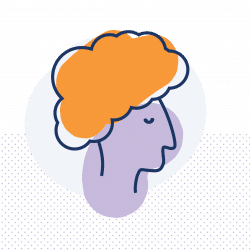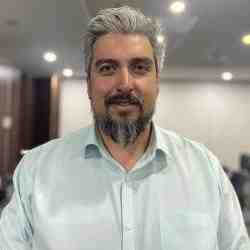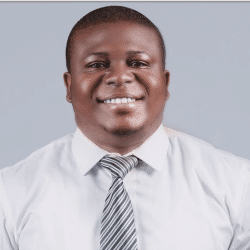Introduction
Liisa Smits has developed an accurate and reliable weather forecast system for the tropics and by making it accessible to small farmers is empowering them to make educated decisions to increase efficiency and agricultural yield.
The New Idea
Liisa developed the first reliable weather forecasting model for near-equator areas, which produces highly accurate weather predictions with regional and seasonal outlooks, monthly trends, and rain predictions. Making this information available and easily accessible to farmers in the tropical areas of Ghana, she is bridging a gap in the value chain, enabling farmers to make informed decisions, mitigating adverse impacts from weather patterns, and optimizing conditions for the agricultural sector.
Due to climate change, weather in the tropics is extremely sporadic, inconsistent, and changing. By creating an entirely new and accurate formula for predicting weather in these parts of the world, Liisa can provide customized weather forecasts, early warning alerts, and climate data sets allow farmers to increase their yield and efficiency by timing planting, cultivating, and harvesting. In so doing Liisa is improving not only the livelihood and economic independence of farmers, but is also contributing to farm productivity, income, environment, and the agricultural industry.
The tropics account for 20% of the world’s land and the majority of the world’s population. There is a high demand to have accurate weather information for these parts of the world. Although Liisa has begun working in Ghana, she is quickly spreading to other countries in West Africa, and has clear plans to expand to India and eventually all 16 countries through which the equator passes.
The Problem
Weather forecasts in the tropical areas of the world—around the equator—have consistently had low accuracy (around 38%) due to the chaotic nature of the atmosphere, the massive computational power required to solve the equations that describe the atmosphere, error involved in measuring the initial conditions, and an incomplete understanding of atmospheric processes. The fundamental barriers to advancing climate diagnosis and prediction on time-scales from years to days are partly attributable to gaps in knowledge and the limited capability of contemporary operational and research numerical prediction systems. Twenty percent of the world’s area doesn’t have reliable weather forecasts, yet the majority of the world’s population live in these areas.
Further, although data from satellites has improved significantly within the last decade, there are only two major meteorological centers in the world—the European Center for Medium-range Weather Forecasts (ECMWF) and the National Center of Atmospheric Research (NCAR). Neither of these facilities—located in the UK and the US respectively—specializes in weather forecasts in the tropics. Furthermore, there is an increasing need to study weather patterns in the tropics as it is the area that has been and will continue to be most affected by climate change.
The agricultural sector is the most weather-dependent sector and is thus hugely affected by the inaccurate weather predictions and lack of data for weather in the tropics. Weather prediction is one of the most important factors in the success or failure of an agricultural enterprise as well as the economic independence of small-scale farmers. Bad weather predictions lead to loss of crop, supplies (i.e. fertilizer), time, and money. For example, farmers have to be extremely weather conscience when they initially plant their crop. They cannot plant if it is too dry and will also lose 100% of their fertilizer if it rains the day following the planting. They often lose money when they hire people to help on farms when it rains because of cultural norms to not work in the rain. Without accurate weather predictions, farmers have to take many risks and make uninformed decisions. In addition to directly affecting the livelihood, security, nutrition, income, and well-being of the farmers, it has further affects agricultural production as a whole—resulting in recurring problems with food security and large dependencies on imports.
The Strategy
Liisa first began to recognize the gaps in weather predictions while working as a researcher at the University of Washington where she researched the arctic areas and o-zones. She observed that the weather forecasts for the tropics were extremely unreliable and instead of continuing a life of academic research, she decided that she would solve this problem.
The strategy behind Liisa’s work is composed of first, the scientific element, and second, the marketing. Liisa formed a team of 4 international scientists—NASA colleagues that had been involved with her research. The team had to first put aside all of their assumptions and then spent four years developing new technology that would increase the accuracy of tropical weather forecasts. Noticing that global models for weather predictions were made from simple algorithms, the research team quickly realized that part of the solution would be to calculate a different, unique algorithm for the tropics. Using the convective process—a process that wasn’t naturally used to predict weather but rather measured the moisture in the air—in addition to the same satellite images and geo-stationary data that had previously been available, the team put together different equations that represented the reality of the region. Factoring in pressure and temperature differences, Liisa’s scientific team was able to create a new algorithm that predicted tropical weather with an 84% accuracy—a rate that had previously been unheard of for the region.
Having developed an accurate weather prediction formula, Liisa and her team decided to move to a tropical country where they could better understand the local market and integrate themselves with the people who would be most affected by the new weather predictions. The team chose to start their work in Ghana because it is an English-speaking country that has experienced significant grown and change in GDP as well as being a long-term democratic and relatively secure region.
In a place where she could study the livelihoods of those affected by and dependent on the weather, Liisa moved to the Northern part of Ghana where she could interact daily with farmers and agricultural companies. She first conducted an assessment on their level of knowledge of climate change and was reassured in her efforts when she learned that they were very aware of the climate change but did not know how to adapt their work to the ever-changing weather patterns. Liisa spent a significant amount of time understanding the farmers’ lifestyle, how they practiced farming, and ways in which she could gain their trust. Recognizing that every single farmer that she interacted with had and used a mobile phone daily, she decided to design a SMS text messaging system that would send monthly, weekly and daily weather forecasts to farmers. Wanting to reach all farmers, she designed the text to appear in simple images as well as have voice mail options for those who could not read.
Wanting to be sustainable but also as an effort to maintain intellectual property on the system her team developed, Liisa set up a for-profit organization. Liisa’s business model includes three ways in which someone can receive the text message weather forecasting service—direct payment, corporate payment, and third-party reselling. First, individual farmers can subscribe directly to the service. Liisa uses a very low pricing model, costing approximately .026 cents per text message. Thus, farmers who subscribe individually pay less than $1/month and an average of $5/season. Second, corporations or organizations can subscribe to the service. Within a short period of starting the SMS service, Liisa already had seed companies, pesticide companies, USAID, and IFDC (International Fertilizer Development Center) wanting subscriptions to the service. Third, Liisa’s strategy also includes third-party reselling. For example, farming co-operatives can subscribe and then re-sell the information. Additionally, Liisa has fertilizer companies that purchase hundreds of prescriptions and add a code on a back of fertilizer for the purchaser of the fertilizer to receive the SMS service for free.
Wanting to go beyond sharing the weather forecasts to helping farmers make better decisions with the new weather information, Liisa decided to work directly with organizations that provide other services to farmers. Known as field officers, the Ghanaian government employs extension workers to give agricultural advice to farmers. As of January 2014, Liisa was working with over 700 field officers and many civil sector organizations. Knowing how valuable the weather predictions were, the field officers and CSOs immediately began working with Liisa, participating in trainings that helped them better understand how to make informed decisions based on the new weather predictions. These field officers now work daily with the farmers, answering their questions and also providing daily feedback of the farmers’ needs. This partnership is also emulated in the CSOs that Liisa works with. One organization, Masara N’Arziki, which supports maize farmers in Ghana, received Liisa’s training and now shares her weather forecasts with their beneficiaries.
Additionally, Liisa set up a 24-hour helpline for farmers to call and get answers to their questions and advice on when and how to plant, cultivate, and harvest their crops. Liisa has also partnered with MTN Telecommunication Company to increase coverage in extremely rural areas, thus getting the information out on a wider-scale.
With the accurate weather information, Liisa is seeing direct results. In 2013, a study conducted by Colombia University found that the farmers who received the weather predictions had significantly higher outputs of their crop than those who did not. With an 84% accuracy rate, Liisa’s work is not just re-packaging old weather forecasts but producing an entirely new and accurate one.
When Liisa first piloted the project, 3,400 famers were involved (half of them paying directly and the other half received the subscription through a co-op). In the second season, an additional 10,000 farmers signed up for the service. Within three years Liisa expects to have complete saturation in Ghana and high saturation in other West African countries. She has already had conversations with the Nigerian government who is interested in purchasing (paid for by the World Bank) subscriptions for 10 million Nigerian farmers. Because of the simple, technology-based solution, Liisa’s work is easily replicated. Within five years she plans to replicate to India and spread to the 16 countries that lie in the tropical regions of the world.
The Person
Born and raised in Stockholm, Liisa was an active citizen at a very young age. When she was 13, she became an advocate at her school—meeting with students, teachers, and the principal—to start a constituent voice initiative in which she encouraged and enabled students to speak up about their education.
Liisa continued to be involved over the next several years in education reform and student participation, and at the age of 18 she was invited to take up a local political position. During her term, Liisa was puzzled that the local government didn’t allocate more funding to education as she saw them spend significant amounts of money on new buildings and structures that weren’t always being used. She was able to successfully convince the local government to increase their education budget after doing a thorough cost-benefit analysis of the building budget and how the space was being used. Additionally, she created a policy that required local school boards to have at least one student sit as part of the board.
While still involved in local politics, Liisa attended University, getting master’s degrees in both meteorology and physics—two subjects of which she had long-time interest in. Upon graduation, she moved to the US to work on climate change research at the University of Washington as part of a NASA research project. While monitoring climates in different parts of the world, she discovered that the formula for calculating weather patterns and forecast for the tropics was extremely unreliable. It was then that Liisa realized that she wanted to do more than just research. Drawing upon earlier advocacy and leadership experiences, Liisa decided to resign from her lucrative research position and use her skills and background to make a sustainable impact. Recognizing that no one else was focusing on producing more accurate predictions for the tropics, Liisa gathered a team to help her solve this problem. After successfully finding a formula to make accurate weather predictions, Liisa founded Ignitia and decided to move to Ghana in 2009, convincing her team to do so also. She currently resides in Ghana and is working to spread her innovation throughout all tropical areas of the world.
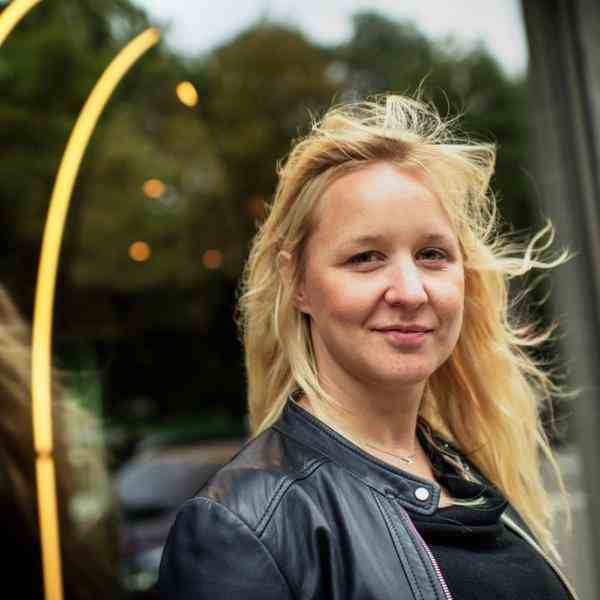
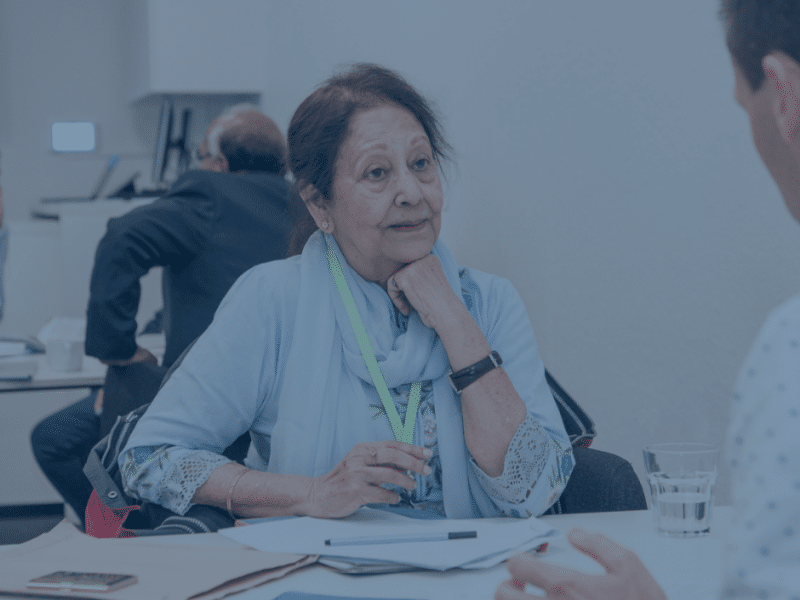 Tile image
Tile image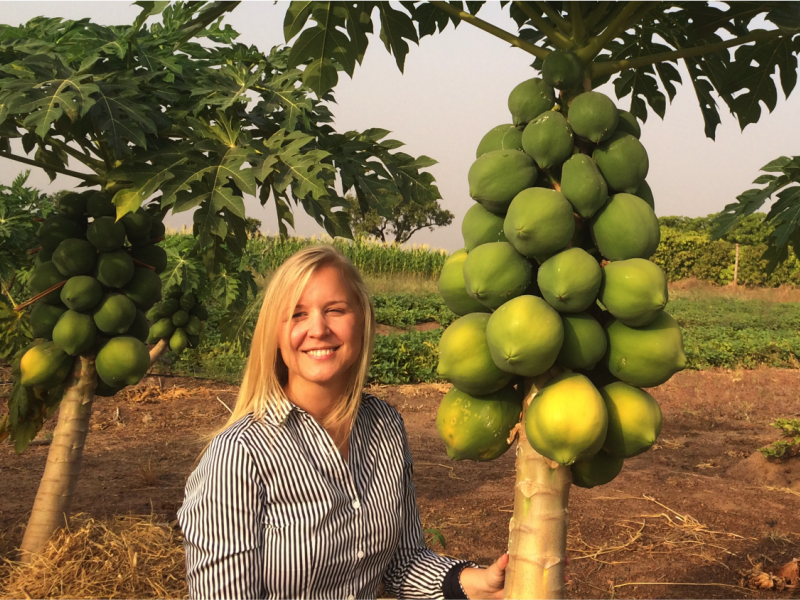 Tile image
Tile image